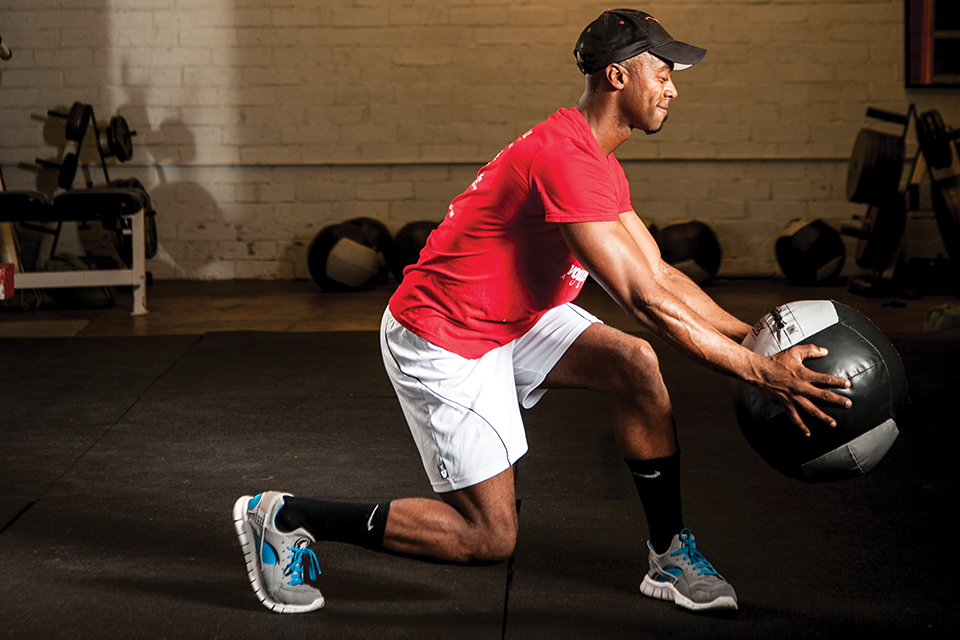Circuits Lead to High Performance

"Training movement not muscles” is a phrase we commonly use in the fitness industry to describe exercises that focus on quality of performance versus isolating muscle strictly for bodybuilding. For this reason, many trainers and coaches have adjusted the focus of the workout from isolating body parts (chest, biceps, legs) to targeting movements that relate to strength needed to enhance speed, endurance and power. This doesn’t mean we are getting away from developing a lean and shapely physique. We are actually improving the body’s ability to do more work in less time while involving more muscle mass in the process. This gives multi-purpose “big bang” results, the weight loss people are working toward as well as being able to move better and resist injury. This is also the secret to many of the successful boot camps and amped-up group classes where attendees are getting fit and lean while staying healthy enough to keep coming back.
We’ve used the Four Pillars of Human Movement, targeting one exercise for each pillar category, to put together an example of a circuit based on movement. Together, these four exercises create one great total body circuit:
Level Changes (Lower Body Movement): Front Squat with Kettlebells (KB)
a. Stand tall, with feet shoulder-width apart.
b. Use a front-loaded position to hold the KB with each forearm and wrist vertical and positioned on each side of the chest.
c. Sit back into the squat with feet facing forward and torso upright.
d. Keep a flat back position and avoid rounding of the back.
e. Push through heels to return to standing position.
Push or Pull (Upper Body Movement): Prone Row with Dumbbells (DBs)
a. Start in a push-up or plank position with hands placed on DBs in close stance underneath the chest.
b. Maintain a solid plank position while performing a row by pulling one elbow up vertically and raising the DB just to the side of the chest.
c. Lower the DB to the ground with control and repeat, alternating on each side.
Rotation or Rotary Stability (Core Work): Russian Twist with Dynamax Medicine Ball (MB)
a. Stand with feet shoulder width apart, arms extend forward holding the MB, and rotate the upper body.
b. Pivot the back foot to drive the hips into rotation, which assists the torso.
c. Keep the knee you are rotating toward facing forward.
d. Make sure to rotate on ball of the trailing foot to release the heel of the back leg, which helps to protect the lumbar spine.
Locomotion (Speed, Agility, Quickness): Zigzag Shuffle with Cones
a. Place cones two- to three-feet apart in a straight line.
b. Start in athletic position on one side of the first cone.
c. Shuffle without crossing feet over in a diagonal pattern between the cones while always facing forward.
d. Get a good push off the outside foot as you change directions as you shuffle.
Use these exercise categories to build your own circuits and know that you are building strength and endurance, which translates to better work capacity and efficiency. This approach to exercise provides great conditioning and includes the major movement categories to build a high performance circuit to rev your metabolic engine!
Diane Vives, M.S., C.S.C.S. is an Advisory Member of the Under Armour Performance Training Council. An internationally recognized fitness expert, she has appeared in several publications such as Women’s Health, Shape, and Muscle & Fitness Hers.






